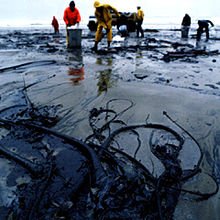List of Environmental Impact
The National Environmental Policy Act (NEPA) process begins when a federal agency develops a proposal to take a major federal action. These actions are defined at 40 CFR 1508.18. The environmental review under NEPA can involve three different levels of analysis:
Categorical Exclusion (CATEX)
A federal action may be "categorically excluded" from a detailed environmental analysis if the federal action does not, "individually or cumulatively have a significant effect on the human environment" (40 CFR 1508.4). The reason for the exclusion is generally detailed in NEPA procedures adopted by each federal agency.
Environmental Assessment/Finding of No Significant Impact
A federal agency can determine that a Categorical Exclusion (CATEX) does not apply to a proposed action. The federal agency may then prepare an Environmental Assessment (EA). The EA determines whether or not a federal action has the potential to cause significant environmental effects. Each federal agency has adopted its own NEPA procedures for the preparation of EAs. See NEPA procedures adopted by each federal agency.
Generally, the EA includes a brief discussion of:
Based on the EA, the following actions can occur:
Environmental Impact Statements (EIS)
Federal agencies prepare an Environmental Impact Statement (EIS) if a proposed major federal action is determined to significantly affect the quality of the human environment. The regulatory requirements for an EIS are more detailed and rigorous than the requirements for an EA.
Summary of the EIS Process
- An agency publishes a Notice of Intent in the Federal Register. The Notice of Intent informs the public of the upcoming environmental analysis and describes how the public can become involved in the EIS preparation.
This Notice of Intent starts the scoping process, which is the period in which the federal agency and the public collaborate to define the range of issues and possible alternatives to be addressed in the EIS.
- A draft EIS is published for public review and comment for a minimum of 45 days.
Upon close of the comment period, agencies consider all substantive comments and, if necessary, conduct further analyses.
- A final EIS is then published, which provides responses to substantive comments.
Publication of the final EIS begins the minimum 30-day "wait period, " in which agencies are generally required to wait 30 days before making a final decision on a proposed action.
EPA publishes a Notice of Availability in the Federal Register, announcing the availability of both draft and final EISs to the public. .
- The EIS process ends with the issuance of the Record of Decision (ROD). The ROD:
What is included in an EIS?
An EIS Includes:










